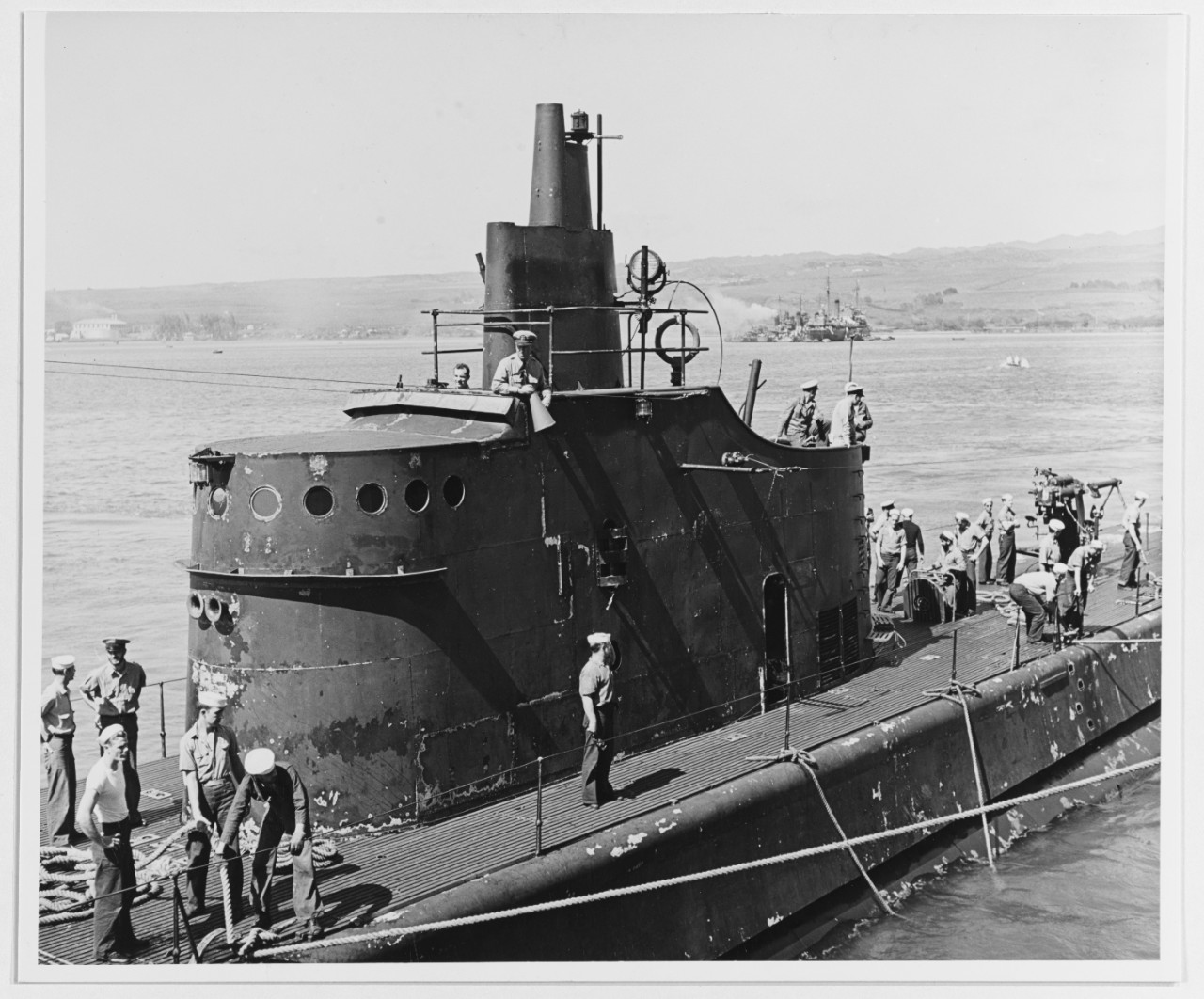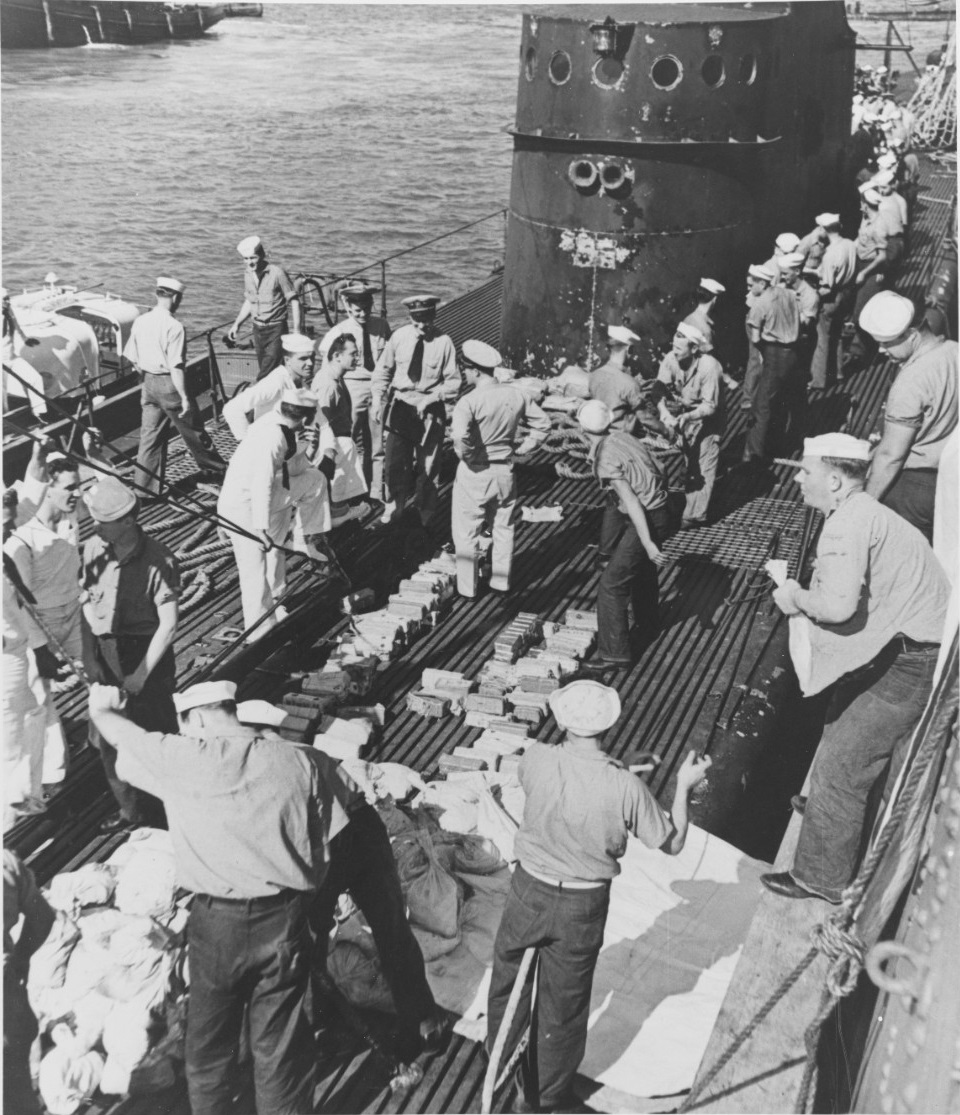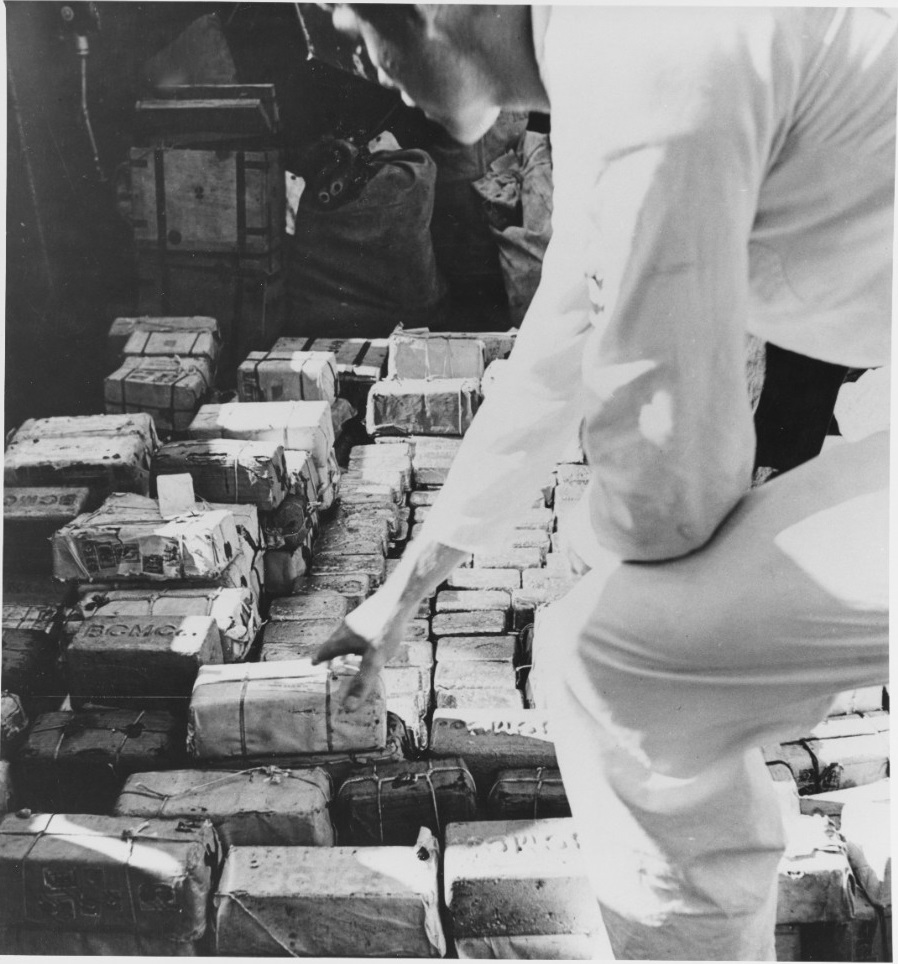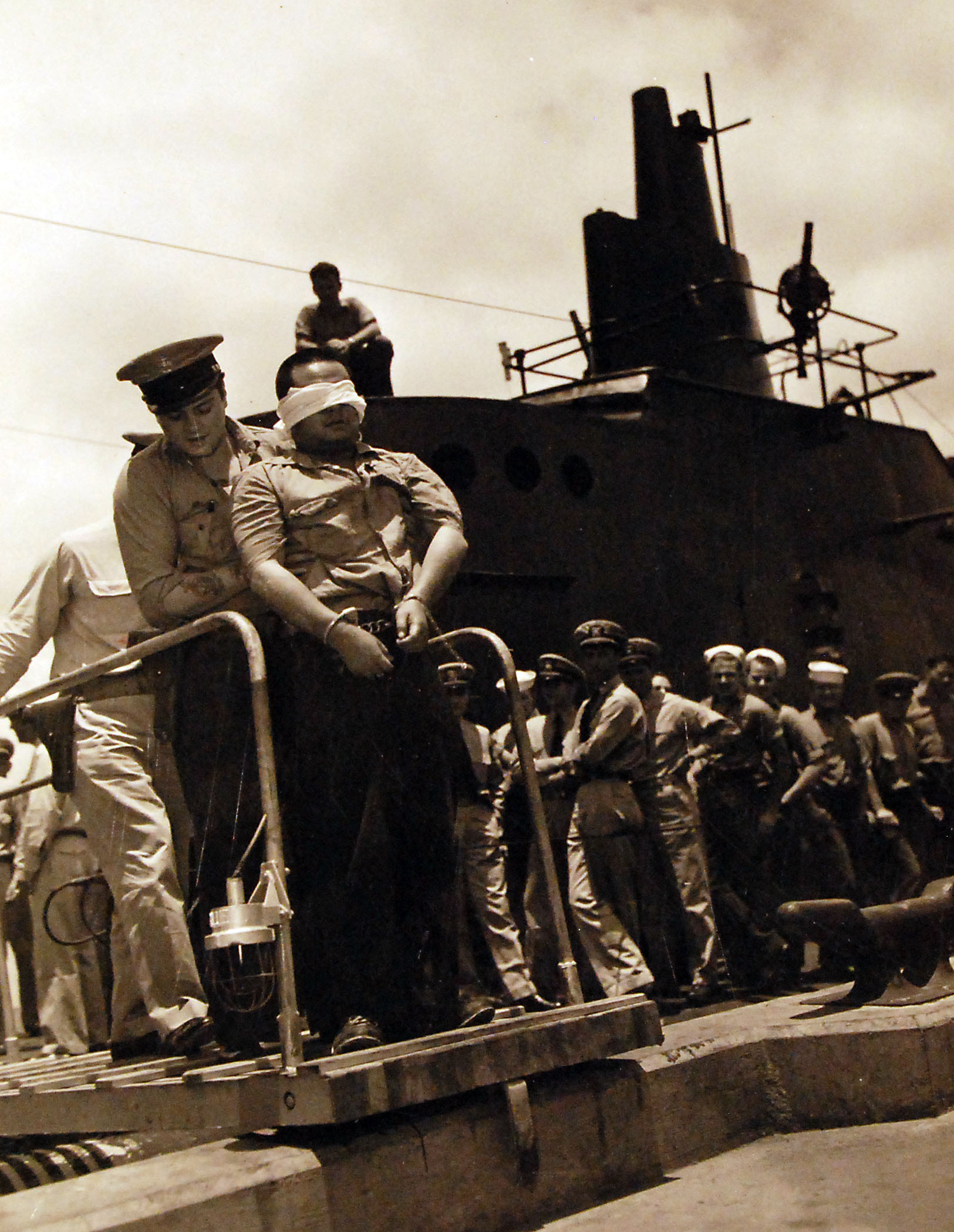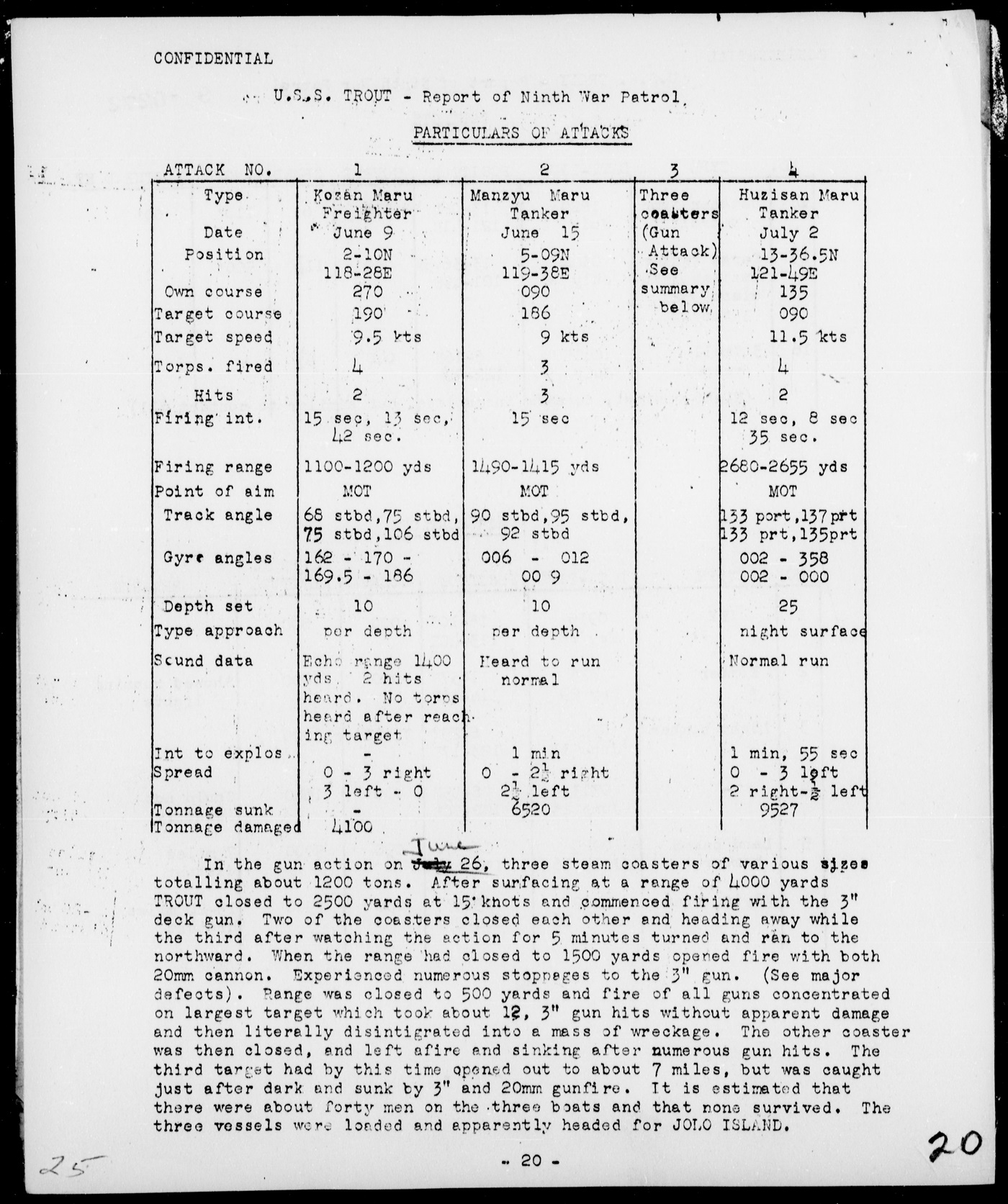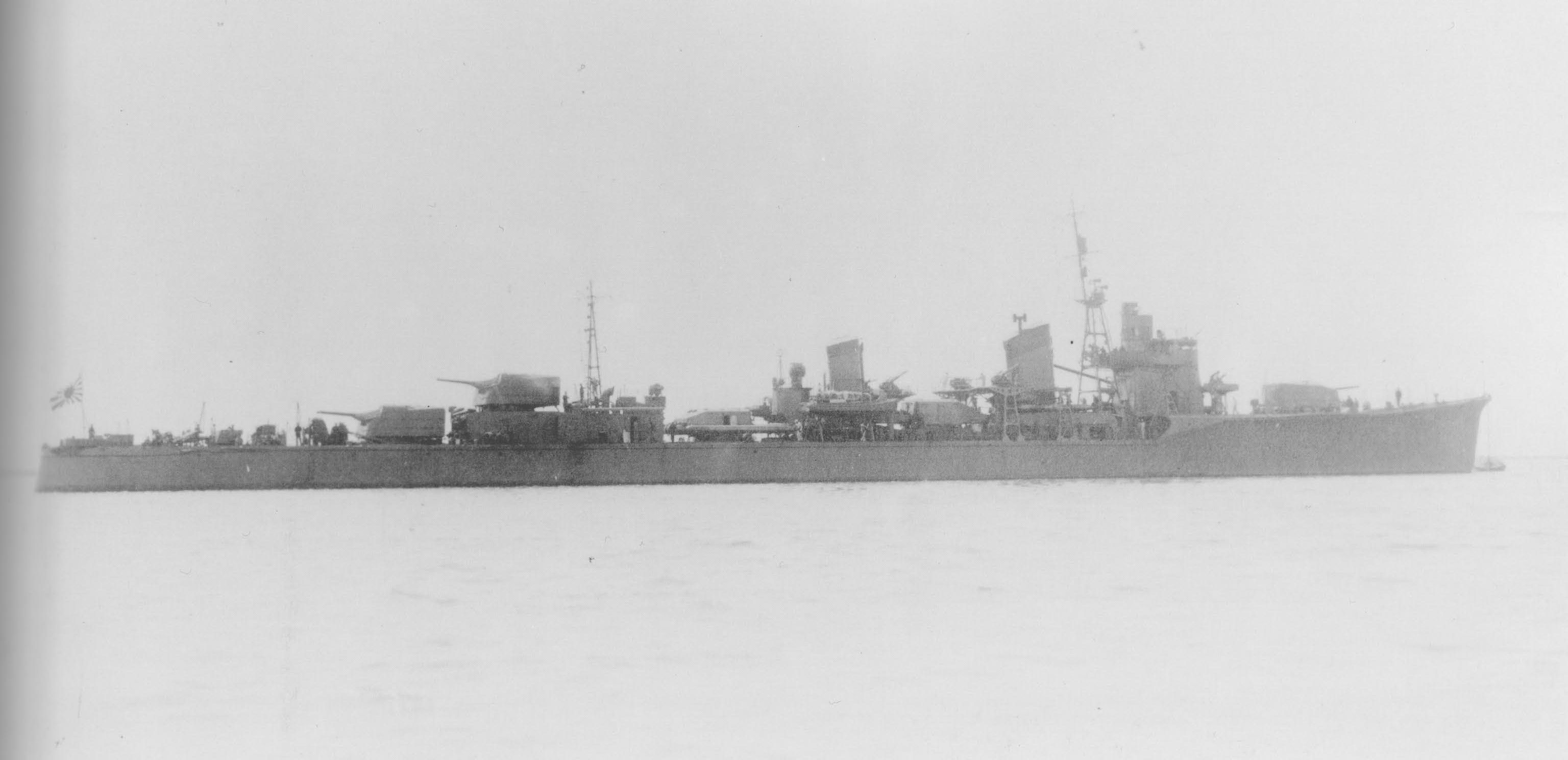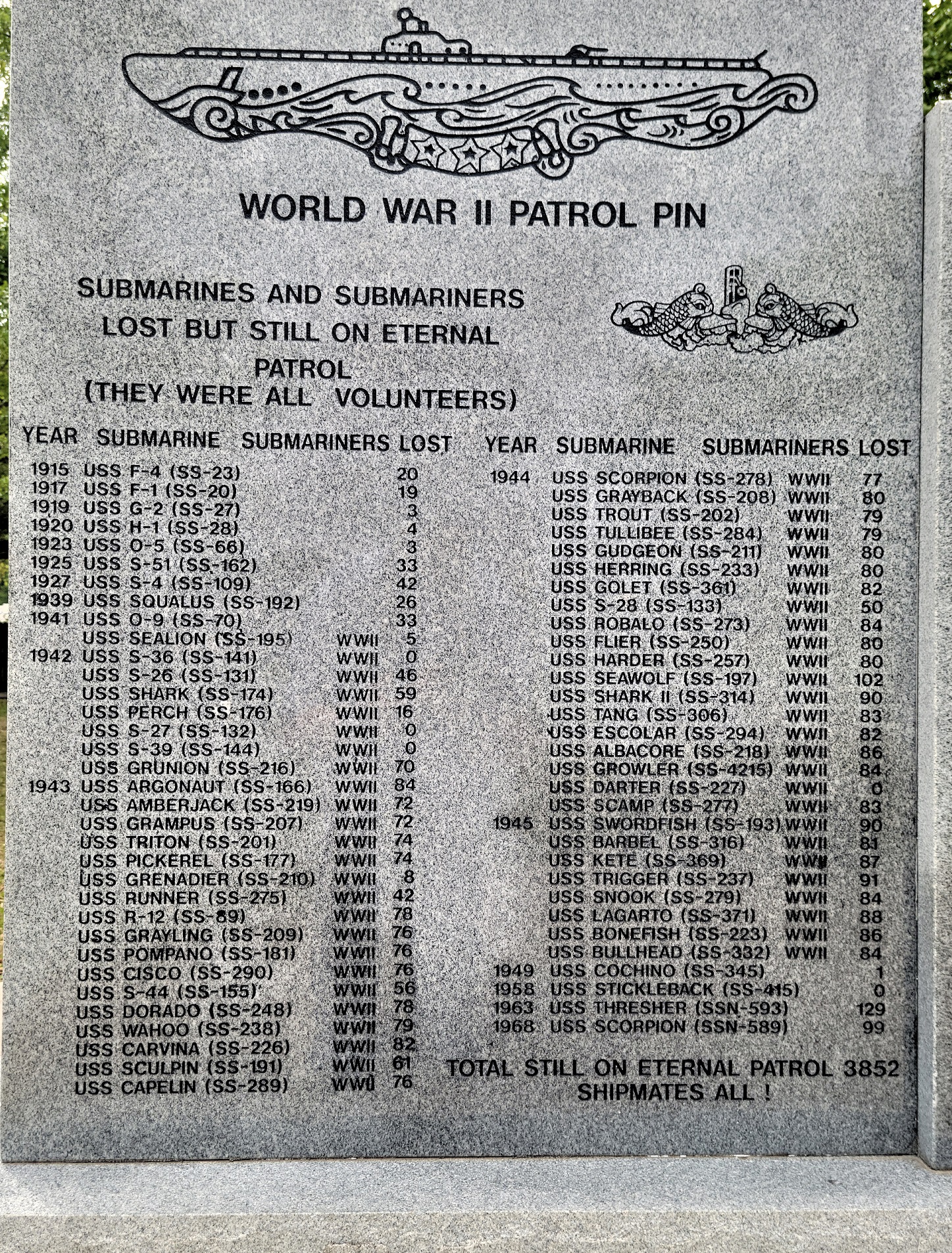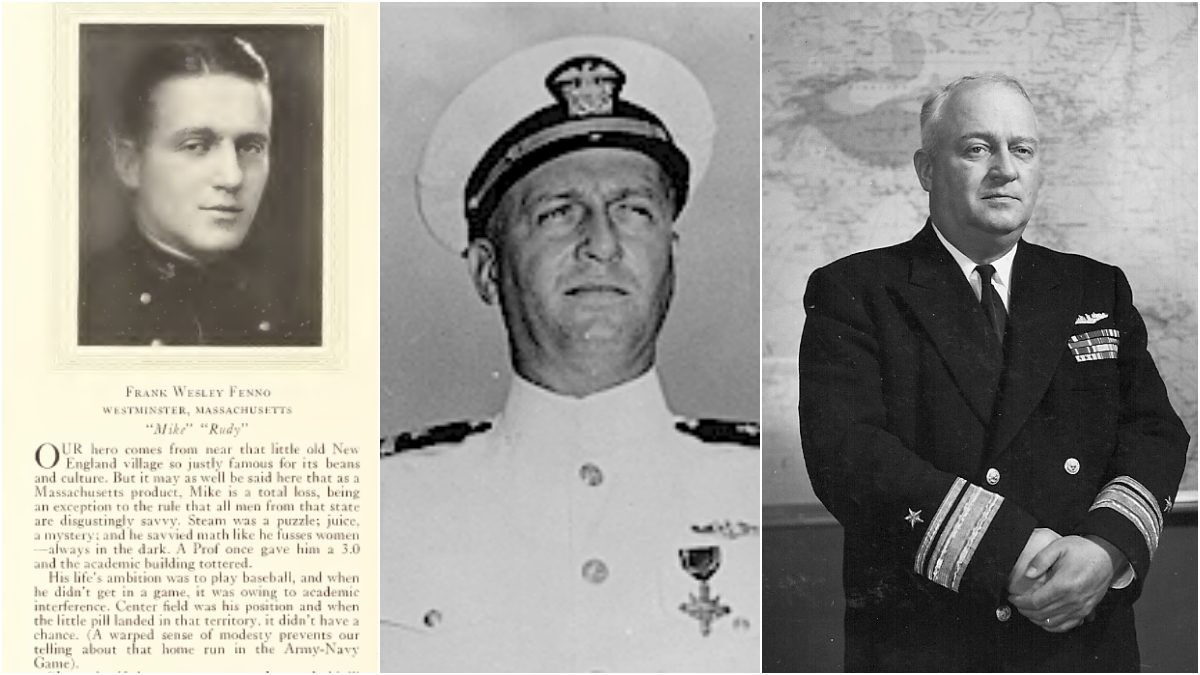Here at LSOZI, we take off every Wednesday for a look at the old steam/diesel navies of the 1833-1954 period and will profile a different ship each week. These ships have a life, a tale all their own, which sometimes takes them to the strangest places. – Christopher Eger
Warship Wednesday (on a Thursday) Jan. 11, 2024: Like a Bad Penny
Above we see the modified Russian Sokol (Falcon) class destroyer Reshitel‘nyi (also seen in the west transliterated as Rieshitelni, Ryeshitelni, or Reshitelnyy, and often confused with sister Rastoropny) and her crew in Port Arthur in 1904.
She had…an odd career.
The Sokol class
Basically the default class of Russian torpedo boat destroyers in the 1900s, the Sokols (sometimes referred to as the Krechet class as the second ship incorporated several minor changes) were a Yarrow design and were one of the world’s fastest such ships when they took to the water, with the lead ship hitting 30.2 knots at 4,500hp on trials– although with the more typical 3,800 hp output they were rated at 29 knots, which was still plenty fast for the era.
Small and sleek, they were not much larger than torpedo boats, running about 190 feet overall with just a narrow 18.5-foot beam. They could float in just seven feet of water, making them ideal for littoral operations. Displacing around 240 tons, they used 2 VTE steam engines fed by 4 Yarrow boilers and were good for about 600 miles on a maximum 58-ton coal load when chugging along at 15 knots.

Sokol before delivery in 1895 while still in the Glasgow area on trials with her recently arrived Russian crew, but no armament. Via Cassiers Magazine circa 1897

Destroyer Сокол ‘Sokol’ during her travels from Great Britain to St. Petersburg in 1895, after a heavy green paint was applied and her armament installed.

Owl, later Ryanyy, on trials in the Gulf of Finland in May 1901. She would serve in the Baltic Fleet her entire career, survive the Great War, and was captured in Helsingfors by Finnish White Guards in 1918, later becoming S1, the first Finnish destroyer although she was largely just used for training along with four of her sisters. She was the last of the class afloat, only discarded in 1939.
Their main armament was two Russian-pattern 15-inch Lessner-type torpedo tubes on aft turnstiles with six Whitehead torpedoes (two loaded, four in the bow cockpit with their warheads in the magazines) while her guns were French: a single 3″/48 Canet gun with 180 shells, and three 47mm 3-pounder Hotchkiss guns with a supply of 800 rounds. They could also carry as many as 18 mines in a pinch.

Sokol class destroyer. Note her large Canet gun forward, three smaller Hotchkiss guns spread out stern and amidships, and her two aft torpedo tubes. Observe the rail track running down the starboard side of the deck. This allowed reload torpedoes to be moved from the bow cockpit to the tubes and could also double as parking for mines, which could be deployed over the side
The crew was about 50 officers and men.
In all, 27 hulls of the Sokol/Krechet class were constructed between November 1894 when the class leader was laid down at Yarrow in Glasgow and the final, Statnyy, laid down by the Nevskiy works in St. Petersburg, was completed in July 1904. In between, two other yards– that of Wm. Crichton’s works in Finland and St. Petersburg and the Izhora Admiralty Works at Kolpino– got in on the contracts. Following Sokol’s lead, they were initially all issued bird names, but in 1902 this was changed to a more dynamic naming convention after attributes (Obedient, Strong, Zealous, et.al.)
Meet Our Tin Can
Laid down at the Nevskiy Works as Kondor in 1900, just after the Tsar’s government had wrestled a 25-year lease on the Chinese harbor at Port Arthur along with a concession to extend the Russian-run Chinese Eastern Railway to the port, the 12th Sokol was also the first of a series of 12 destroyers that would be shipped, incomplete, in sections some 7,000 miles east by rail and boat to be completed at the growing naval base on the Liaotung Peninsula.
These 12 were very slightly longer (200 feet oal vs the 190 feet of the standard Sokol) and heavier (300 tons full load vs 240) with a beam a few inches wider and a draft a few inches deeper. This was to accommodate eight smaller but more efficient Yarrow boilers and bunkers to carry as much as 80 tons of coal, giving them an endurance of 750 miles at 15 knots, something thought beneficial for the Pacific.
At that, Kondor, which had been renamed while incomplete, first to Baklan (Cormorant) and then to Reshitel‘nyi (Resolute) under the new naming convention for the type, took to the water of the Pacific and was commissioned on 14 July 1903.
Of the 12 stretched Sokols sent to Port Arthur in such a manner, all managed to be completed although the final three– Strashnyy, Stroynyy, and Statnyy— were done in the summer of 1904 while the port was under Japanese blockade, so the shakedown period was…difficult.
War!
As covered above, Reshitel‘nyi was the oldest of the dozen modified Sokol class destroyers at Port Arthur during the Russo-Japanese War.
Her first skipper, the noted polar explorer LT Alexander Alekseevich Korniliev, died of pneumonia and severe concussion received in his ship’s first battle with the Japanese fleet in the frigid waters, one that saw the sister destroyer Steregushchiy sent to the bottom while on a scouting mission that bumped into a superior force.

Japanese destroyer IJN Sazanami attempting to tow a sinking Steregushchiy, lost in action against two Japanese cruisers, while Reshitel‘nyi managed to escape. In the fight, Reshitel‘nyi lost one killed and 16 injured– a third of her crew. William Lionel Wylie painting.
Reshitel‘nyi’s second skipper was Capt. (2nd Rate) Fyodor Emilievich Bosse, who had been in command of the two-ship task group when Steregushchiy was lost and was ordered to take over for the ailing LT Korniliev. Bosse, who was also wounded in the engagement, surrendered his command in March 1904 and was invalided back to European Russia (while the railroad was still connected) for recovery– saving him from the disaster that would befall the Tsar’s Pacific Squadron.

Bosse, who commanded the ill-fated task group that left Steregushchiy sunk, Reshitel‘nyi damaged, and himself wounded bad enough to be sent home. He would retire as a rear admiral in 1916 after 40 years of service, survive the Revolution and Civil War, and then go on to be an advisor to the Peruvian Navy during the 1932-1933 Peruvian-Colombian War. He is buried in Lima.
With her third skipper in less than a year, LT Platon Platonovich Travlinsky, the scratch-and-dent Reshitel‘nyi was one of the Russian destroyers on patrol just outside of Port Arthur that spoiled the second Japanese attempt to scuttle four blockships at the entrance, torpedoing them well short of the outer harbor, too far out to fill their intended role.
Russian accounts credit the destroyer Silnyii with hitting two of the blockships while Reshitel‘nyi torpedoed a third.
In July, out of torpedoes, Reshitel‘nyi conducted two successful mine laying operations near the harbor’s approaches.
Escape to China
Russian RADM Wilgelm Vitgeft, the third head of the Russian Squadron at Port Arthur since the war started (the first was sacked and the second killed when his flagship was sunk), was ordered against his better judgment to break out of the besieged port in early August 1904 and form up with a group of armored cruisers that made up the Vladivostok squadron, turning the tables on the Japanese blockade force under Admiral Togo.
In a poor state and with repair facilities in Port Arthur lacking, Reshitel‘nyi was unlikely to be able to break out for Vladivostok and would have to remain in the port to be destroyed or scuttled by her crew should the siege not be lifted.
On the morning of 10 August, Vitgeft took everything he thought that could make it– the battleships Tsesarevich, Retvizan, Pobeda, Peresvet, Sevastopol, and Poltava, the protected cruisers Askold, Diana, Novik and Pallada, and 14 destroyers– out to sea. A few hours later, most of them limped back after being repulsed by Togo. Vitgeft and his staff were killed by a 12-inch salvo from the Japanese battleship Asahi that cleared the bridge of his flagship, Tsesarevich, which, heavily damaged, made for exile in the German treaty port of Tsingtao along with three German-made destroyers.
That afternoon came orders for Reshitel‘nyi to limp out under the cover of darkness to the nearest neutral port with a Russian consulate, Chefoo (now Yantai), some 100 miles directly across the Bohai Strait from Port Arthur on the Shandong Peninsula. There, she would bring vital dispatches for the consul to send on to the higher authorities, among them the details of Vitgeft’s defeat.
But first, let us paint you a picture of Chefoo during the Russo-Japanese War.
It was from Chefoo that the flotsam and jetsam of the combat at Port Arthur washed up. As early as February 1904, shipwrecked Japanese sailors rowed into the harbor in the lifeboats. This was followed by successive waves of Russian refugees and blockade runners of all stripes smuggling contraband across to the besieged garrison via sampan and coaster. Meanwhile, foreign correspondents of all stripes set up shop in Chefoo to turn second and third-hand tittle-tattle into news stories for the hungry masses back home. For example, many of the columns on the war appearing in the New York Times in 1904 were filed from Chefoo.
The indifferent Chinese Qing dynasty’s government at Chefoo was represented by one Admiral Sah aboard the fine German-built protected cruiser Hai Yung (2680 tons, 3×5.9 inch, 8x 4.1 inch, 3 tt), resting at anchor under the protection of a battery of Krupp-made coastal artillery that controlled the harbor.
Ashore was a division of the Qing New Army’s infantry and brigade of cavalry, both of which had Japanese instructors, so there is that.
Western warships also often could be found in the harbor, with the American cruiser USS Cincinnati sharing space that summer with German VADM Curt von Prittwitz’s visiting East Asiatic Squadron, with the old man aboard his flagship, the cruiser Furst Bismarck.
Now back to the story of our little destroyer’s breakout.
Moving out of Port Arthur on the dark night of 10 August, Reshitel‘nyi was able to make 18 knots and miraculously threaded her way through holes in the Japanese screen, arriving at Chefoo at 0605 on the morning of 11 August.

Reshitel‘nyi (spelled “Rieshitelni” on the record), was photographed at Chefoo, China, on 11 August 1904, possibly by U.S. Navy personnel or the American consul. Courtesy of Mr. Boris V. Drashpil, 1982. NH 94358
Her fourth skipper, the eager LT Mikhail Sergeevich Roshchakovsky (formerly of the daring little minelayer Avos who had crept within yards of Japanese warships to lay mines outside of Port Arthur), had a plan of his own which included patching his little warship up enough to be able to sortie south to the only allied port, Saigon in French Indochina, where he could presumably join Admiral Rozhestvensky’s Russian Baltic Fleet (dubbed the Second Pacific Squadron) for their final voyage.
Floating under the radar, so to speak, in the Chinese port without surrendering to internment wasn’t out of the question. At the same time, the damaged Russian light cruiser Askold and the destroyer Grosovoi had taken refuge in the port Wusong on the Yangzi and remained there, fully armed, until they voluntarily accepted internment the next month.
However, even in good repair, the likelihood that Reshitel‘nyi would be able to cover the 1,085 sea miles from Chefoo to Saigon, when her maximum range at 15 knots was only about 750 miles when packed with coal, avoiding prowling Japanese warships along the way, was slim.
Still, she would eventually link up with Rozhestvensky but in a quite different way than what Roshchakovsky had in mind.
Unluckily for Roshchakovsky’s plan, Admiral Sah, sending over officers from his cruiser, ordered the Russian destroyer disarmed within 24 hours or he would eject them from the port. Taking a vote from his crew, who elected to tap out rather than roll the dice at sea with moody engines, Roshchakovsky dutifully handed over the breechblocks from his deck guns, barred his torpedo tubes, and surrendered his small arms locker (13 rifles and two revolvers), in addition to disabling his engines and supplying the Chinese with a list of names of his crew. The Russians signed a pledge not to participate in further hostilities.
Roshchakovsky requested his ship be moved from the outer mole closer to shore where the guns of the cruiser Hai Yung and the Chinese coastal battery could protect it. Just in case, he ordered three small charges placed on the bulkheads in the magazines belowdecks, ready to scuttle if needed.
Reshitel‘nyi was out of the war.
Except she wasn’t.
Not wanting to let a juicy prize slip away, the Japanese destroyers Asashio and Kasumi entered the port shortly after Reshitel‘nyi was disarmed but before she could be moved to the inner harbor and dropped anchor in a position that cornered the Russian tin can. Refusing Admiral Sah’s signals to disarm and be interned or leave immediately, they replied that they would leave the next morning
Putting an armed prize party aboard the disarmed Reshitel‘nyi at 0330 on 11 August from two whale boats, Roshchakovsky confronted the Japanese officer in charge. With his hand on a sheathed sword, the Japanese lieutenant offered two options: immediately go to sea and engage in battle, even if he had to be towed, or surrender. Roshchakovsky selected a third option, and grabbed the Japanese officer, forcing him overboard and following him over the side into the harbor. A volley of fire from the Japanese blue jackets wounded the Russian with a bullet in his thigh.
In the ensuing melee, the Reshitel‘nyi’s crew, which more than outnumbered the two boats of Japanese, armed themselves with wrenches, fire axes, and coal shovels and fought it out, that is, until someone triggered the charges in the magazine, which were lackluster in performance.
Damaged but not sinking, the battle could end only one way, with the Japanese eventually taking over the Russian destroyer. Meanwhile, the waterlogged and bleeding Roshchakovsky and his 55 crew– with two men missing and several wounded– withdrew and made for shore. The Japanese suffered as well, losing at least two of their own.
Dawn came with the Japanese towing the captured Reshitel‘nyi out of the harbor and the Russians proceeding to their consulate, where most would spend the rest of the war.
The body of one of Reshitel‘nyi’s missing was recovered and buried ashore with full military honors, carried by her crewmates and escorted by an armed honor guard provided by Admiral Sah.

The crew of the Reshitel‘nyi in the courtyard of the Russian consulate in Chefoo grave of sailor Volovich. Roshchakovsky is the bearded officer in the center.
The fisticuffs became worldwide news and were interpreted by newspaper artists around the globe.
The crew was decorated, with Roshchakovsky both the Order of St. Stanislaus, 2nd class with swords, and the Order of St. Vladimir, IV degree with swords and bow. His men received the Order of St. Anne.
They were Russian heroes in a war with few of those and became legends.
The Russians in late 1904 lodged a “Seven Points” letter with the Great Powers protesting China’s Japanese-leaning neutrality including the use by Japan of the Chinese Miano islands as a naval base, the transport of Japanese war material on the Shanhai-Newchwang railway, China’s Hongkew ironworks accepting Japanese military contracts, Chinese soldiers being enlisted in the Japanese Army, the use of Japanese officers in training the Chinese army, Japan paying Manchurian Hunhutses bandits as irregulars, and, last but not least, the Reshitel‘nyi incident in Chefoo.

Illustration of a “shameless geisha” holding Reshitel‘nyi after Japan captured the destroyer in a neutral port, from the Russian magazine Budil’nik. No. 32, 1904.
Of course, the Japanese countered with an equally lengthy list of instances where Russia had abused Chinese good graces during the conflict including the use of Chinese Army uniforms captured during the Boxer rebellion by scouting units in Manchuria and the entire concept of the East Chinese Railroad.
Under the Rising Sun
It turned out that, as Reshitel‘nyi was built to a British Yarrow design and carried common boilers and engines, the British-allied Japanese were able to repair her rapidly.
The breechblocks to her guns were replaced, and her 15-inch torpedo tubes were swapped out for larger 18-inch tubes. The refurbishment took six months, and she entered Japanese service on 17 January 1905 as the destroyer Akatsuki, taking that moniker to obscure the fact that the Japanese had lost a tin can of the same name to a mine the previous May.

Japanese Navy destroyer Akatsuki (ex-Russian Reshitelnyi) underway to participate in the Battle of the Sea of Japan
Placed under the command of Capt. Masasaku Harada, she was with Togo’s fleet as part of his 1st Destroyer Division when it met Admiral Rozhestvensky’s Second Pacific Squadron at Tsushima in May 1905.
Ironically, her last Russian skipper, LT Roshchakovsky, was there as well, sailing on the old Admiral Ushakov-class coastal battleship Admiral Seniavin as the commander of the ship’s bow 10-inch turret. Roshchakovsky had quickly left Chefoo for Russia the previous August and, after meeting with the Tsar personally to brief him of the loss of Reshitel‘nyi, had asked for an appointment with Rozhestvensky’s squadron, joining Seniavin in October only days before the tub left Russia on her 18,000 trip that ended at Tsushima.
While Roshchakovsky and Harada did not personally engage in the swirling fleet action, the battle did not go well for either. Admiral Seniavin was surrendered on the morning of the 28th and became a Japanese prize– with Roshchakovsky becoming a guest of the emperor for the rest of the war. Meanwhile, Akatsuki/Reshitel‘nyi got so turned around in the dark due to heavy seas and harsh weather that she caused Japanese TB No. 69 to capsize and sink– one of Togo’s few losses in the battle.
Following the end of hostilities, Akatsuki/Reshitel‘nyi/Kondor/Baklan picked up her fifth name, Yamahiko (also seen as Yamabiko), and the loss of the original Akatsuki, a war secret, was finally announced. She would be joined in Japanese service by her sister Sokol class sister Silnyy, which had been scuttled at Port Arthur and rebuilt and renamed Fuzuki/Fumizuki.
Also captured by the Japanese were sisters Serdityy, Smelyy, Skoryy, and Statnyy, who were not returned to service. Meanwhile, sisters Storozhevoy, Steregushchiy, Razyashchiy, Rastoropnyy, Strashnyy, and Stroyny had been lost during the conflict.

Yamahiko in the 1914 Janes, the last of her class in Japanese service. Silnyy/Fuzuki had already been hulked in 1913.
In 1917, our little destroyer was disarmed and removed from Japanese naval service. Working as the coaster Yamahiko Maru for some time, she was scrapped in 1919.
Epilogue
Of the 15 Sokols left in Russian service after 1905, two (Berkut and Prytkiy) were disposed of interwar while the rest were eventually rerated as dispatch vessels or torpedo boats, in the latter tasking picking up larger 450mm tubes. They would endure in the Baltic and Black Sea fleets for another decade, with some transferred to the inland Astrakhan-Caspian Sea flotilla via the Volga.
The final members retained in Soviet service– Prochnyy, Porazhayushchiy, Retivyy, Strogiy, and Svirepyy— would all be gone by the late 1920s.

The Sokol class destroyer Porazhayushchiy, which served in the Baltic fleet from commissioning until 1918, her crew helped to recover the vital cipher book from the grounded German cruiser Magdeburg in 1914. Porazhayushchiy was later transferred to the Caspian where she retired in 1925.
Following the collapse of Imperial Russia, five of the Sokols in the Baltic fleet– Korshun, Prozorlivyy, Rezvyy, Ryanyy, and Podvizhnyy— were captured by the newly independent Finns at Helsingfors (Helsinki) and Hango in 1918. They would be used by the nascent Finnish Navy as S1-S5 and disposed of throughout the 1930s.

S3 (Finnish destroyer) in commission from 1898 to 1921. Photographed about 1920. This ship was the former Russian Sokol-class Prozorlivyy,

The Finnish S-class boats in the 1931 ed of Janes, which at the time still in numbered two former Russian Sokols picked up in 1918.
Roshchakovsky
Now, we touch on the fate of the unsinkable LT Roshchakovsky.
Repatriated from Japan in January 1906 and still nursing wounds from Tsushima and Chefoo, he was seconded to the Ministry of Foreign Affairs for use as a naval attaché in Greece and Germany until he was able to return to duty with the Baltic Fleet in 1908. He would go on to spend the rest of his career with the Tsarist Navy in minelaying/minesweeping work and in small escorts, including command of the Ohotnik-class mine cruiser (minnykh kreyserov) Pogranichnik in the Great War. By 1916, he was in command of the defenses to Kola Bay and Arkhangelsk, where war material was stacked up.
When the Revolution came, Roshchakovsky was cashiered and denied even a pension despite his 23 years of service. He sat out the Civil War in Norway without taking sides– notably writing White Russian General Denikin and urging him to throw in the towel for the sake of the country-– but would spend the rest of his life filing requests with the Soviets to return to naval service, all of which were officially denied. A trained engineer who had won the Admiral Nakhimov Prize while a cadet in 1896, while in Norway Roshchakovsky worked for a shipbuilding company.
Returning to the Motherland in 1925, he served as head of the foreign department under the board of НиГРЭС, the new Nizhny Novgorod powerplant, until 1928, when he was arrested for his past ties to the old regime and exiled to Siberia for three years.
In 1937, at age 61, Stalin’s NKVD picked him up again and gave him five years in a labor camp due to being a “socially dangerous element.”

Capt. 1st Rank Mikhail Sergeevich Roshchakovsky, three-time winner of the St. Anne in addition to the St. Stanislaus and St. Vladimir, perished in the gulag sometime in 1938, the date and place lost to the butcher.
Ships are more than steel
and wood
And heart of burning coal,
For those who sail upon
them know
That some ships have a
soul.
If you liked this column, please consider joining the International Naval Research Organization (INRO), Publishers of Warship International
They are one of the best sources of naval study, images, and fellowship you can find. http://www.warship.org/membership.htm
The International Naval Research Organization is a non-profit corporation dedicated to the encouragement of the study of naval vessels and their histories, principally in the era of iron and steel warships (about 1860 to date). Its purpose is to provide information and a means of contact for those interested in warships.
With more than 50 years of scholarship, Warship International, the written tome of the INRO has published hundreds of articles, most of which are unique in their sweep and subject.
PRINT still has its place. If you LOVE warships you should belong.
I’m a member, so should you be!





























